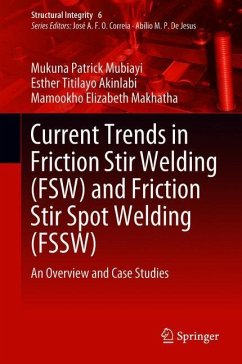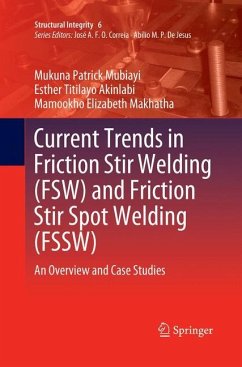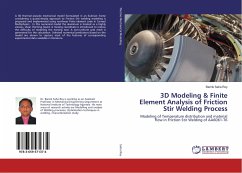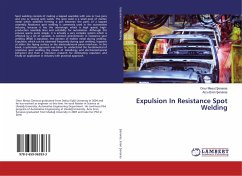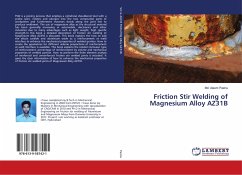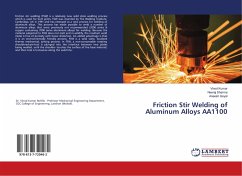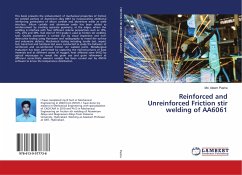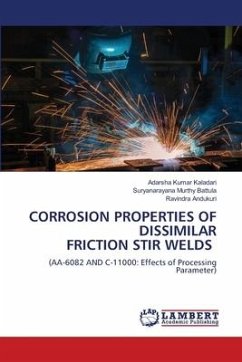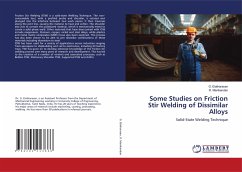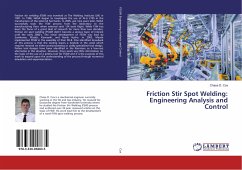
Friction Stir Spot Welding: Engineering Analysis and Control
Versandkostenfrei!
Versandfertig in 6-10 Tagen
49,99 €
inkl. MwSt.

PAYBACK Punkte
25 °P sammeln!
Friction stir welding (FSW) was invented at The Welding Institute (UK) in 1991. In 1996, NASA began to investigate the use of Al-Li 2195 in the manufacture of the external fuel tanks. In 2005, just nine years later, NASA successfully took the FSW process from the laboratory to the manufacturing floor when external tank 134 took flight. While FSW has been the focus of a great deal of research for more than two decades, friction stir spot welding (FSSW) didn't become a serious topic of interest until the early 2000's. The initial development of FSSW was lead by Sumitomo, Mazda, Kawasaki, and Nor...
Friction stir welding (FSW) was invented at The Welding Institute (UK) in 1991. In 1996, NASA began to investigate the use of Al-Li 2195 in the manufacture of the external fuel tanks. In 2005, just nine years later, NASA successfully took the FSW process from the laboratory to the manufacturing floor when external tank 134 took flight. While FSW has been the focus of a great deal of research for more than two decades, friction stir spot welding (FSSW) didn't become a serious topic of interest until the early 2000's. The initial development of FSSW was lead by Sumitomo, Mazda, Kawasaki, and Norsk Hydro. In 2003, Mazda implemented FSSW in the assembly of their RX-8. One identified drawback of this process is that the tooling leaves a keyhole in the weld which requires removal via either post-processing or costly specialized tool design. Pinless tool designs have been identified in the literature as a low-cost alternative in this situation. However, there exists very little information on the topic of the use of a pinless tool for FSSW and it is the purpose of this work to expand upon the understanding of the process through numerical simulation and experimentation.



